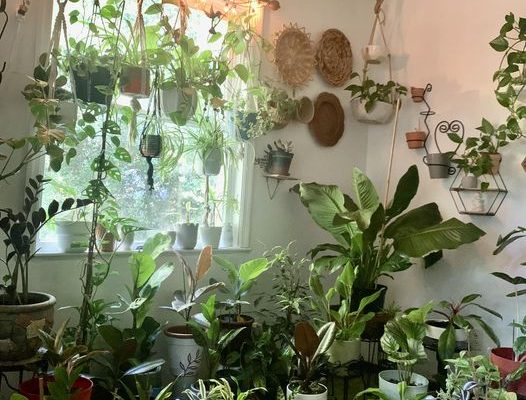Aside from its beautiful beaches, Florida is the inspiration for some pretty incredible things, including Key lime pie and plenty of classic films. But if there’s one product of the Sunshine State that doesn’t get the credit it deserves, it’s the Florida room: a sun-filled room where you can enjoy the weather without the elements. Thinking of adding a Florida room to your home? Here’s all you need to know about the sunny space.
:max_bytes(150000):strip_icc():format(webp)/GettyImages-EC1401-001-2000-c4da538584a1447492141eb71f607c01.jpg)
What Is A Florida Room?
Also called a sunroom, garden room, or conservatory, a Florida room is a roofed addition to a home with three sides of either screened or glass windows or walls. They are typically designed as extensions of the outdoors—and often bearing the home’s exterior siding as the one windowless wall. They have sturdy wood or stone floors, but air-conditioning is optional depending on your need for a four-season Florida room. (Generally, a three-season room, meant to be used in the spring, summer, and fall, isn’t insulated or has HVAC. A four-season room has both, plus glass walls or windows, and is enjoyed any time of year.)
:max_bytes(150000):strip_icc():format(webp)/GettyImages-BB8633-001-2000-dae695eadb1f4a4ea4e2537d1c8c9341.jpg)
History Of The Florida Room
These sunny sanctuaries, like sunrooms, solariums, and conservatories, have been around for centuries. In the U.S., conservatories, a glass-covered greenhouse-like room often attached to the house, grew in popularity in the 1820s and 1830s.
The concept of a Florida room, popularized during the 1950s and ’60s, was born from mid-century homeowners’ desire for a place they could escape and feel like they were outdoors without actually being outside. Designers during this period developed these light-filled home additions surrounded by windows that could open or close to the elements, depending on the weather forecast. They cropped up all over, from the Sunshine State to the Northeast, although whether they were called a Florida room or sunroom depended on where you were in the country.
The bright, bug-free spaces were the ultimate home retreat, a place to bask on sunny mornings with a cup of coffee or gather with guests for pre-dinner cocktails. Yet, somewhere along the way, Florida rooms lost their luster. Newer homes started trading these pseudo-outdoor spaces for full-on indoor-outdoor setups, with open-plan living rooms that lead onto expansive porches and decks. And while we love these features in a home, we’re also rallying for a Florida room reboot.
Why? Of course, there’s the nostalgia. You might remember escaping to the cozy conservatory in your parent’s house as a kid. But there’s also the practicality: What a luxury it is to relax in the sunshine without worrying about sunburns, bug bites, or gusts of wind blowing the last bit of your margarita to the floor.
Now, who else thinks their home would be much better with a Florida room?
:max_bytes(150000):strip_icc():format(webp)/GettyImages-693635179-2000-3bb01f9ae1c349c28d0814b4186ec117.jpg)
How Much Does A Florida Room Cost?
According to HomeGuide, a Florida room can cost anywhere from $8,000 to $80,000 or $80 to $400 per square foot.1 The cost of a Florida room depends on a variety of factors including if the space is a three-season or four-season enclosure, the square footage of your area, whether you want to add a kitchen or not, and how luxurious you decide to make the space. A Florida room will also increase the value of your home. According to HomeGuide, a Florida room has a 50% to 60% return on investment when you decide to sell.
:max_bytes(150000):strip_icc():format(webp)/2436301_Potom00032-2000-b135de7cab0941cd8c70f95be864dd5c.jpg)
How Do You Style A Florida Room?
Because of the potential indoor-outdoor nature of screened walls, mostly all-weather furniture (hello, wicker) is a must in these spaces. As are plants, which can enjoy the sun without the threat of too much rain or pests. Fill these rooms with container plants, like orchids or ferns. Opt for seagrass carpets or play around with floor tiles. Stage the space with comfortable seating, and consider adding a cocktail bar setup.
:max_bytes(150000):strip_icc():format(webp)/GettyImages-97971202-2000-4c1b1a8ea58a4b94b04eddf5362664a1.jpg)
How Are Florida Rooms Different?
If you’ve heard of a Florida room, you might have also heard of similar spaces, like a California room, screened porch, and lanai. While all these spaces allow you to enjoy the outdoors without the weather, there are a few key differences between them and a Florida room.
Florida Room Vs. California Room
While a Florida room is a fully enclosed addition to your home that lets plenty of light in and keeps the elements out, a California room is a space that acts as half room-half porch with indoor amenities. It is not fully enclosed, typically having a side that is completely open to the elements.
Florida rooms are meant to keep bugs and intense weather out while still enjoying the sun. On the other hand, a California room is made for areas with much milder climates and little pest issues. For instance, if you live in a place with lots of mosquitos and intense hot, and humid summers, a Florida room may be a better option for you than a California room where you are exposed to the elements.
Florida Room Vs. Screened Porch
Screened porches are very similar to Florida rooms—both are roofed and both protect you from weather and bugs through windows. However, while a screened porch will generally have an outdoor deck material for the floors, Florida rooms will have indoor flooring. Florida rooms also have the option for glass windows, while porches won’t. And, generally, screened porches won’t have air-conditioning while Florida rooms could.
Florida Room Vs. Lanai
Originating in Hawaii, a lanai is a roofed area attached to a home. Like a Florida room and a screened porch, it can have screened windows to protect you from the elements. However, it doesn’t have to have screens, and, like a California room, a lanai can have one wall open to the outdoors. However, lanais are less protected from the elements than a California room and have less of an indoor-outdoor feel.



